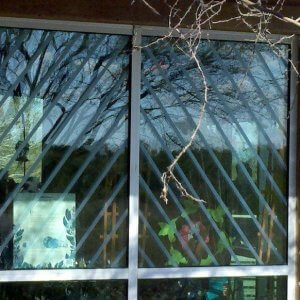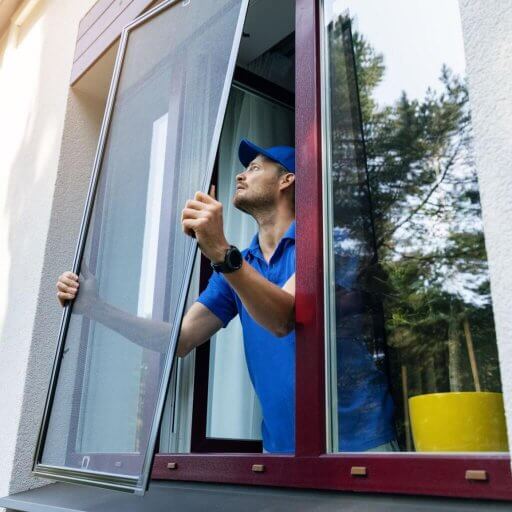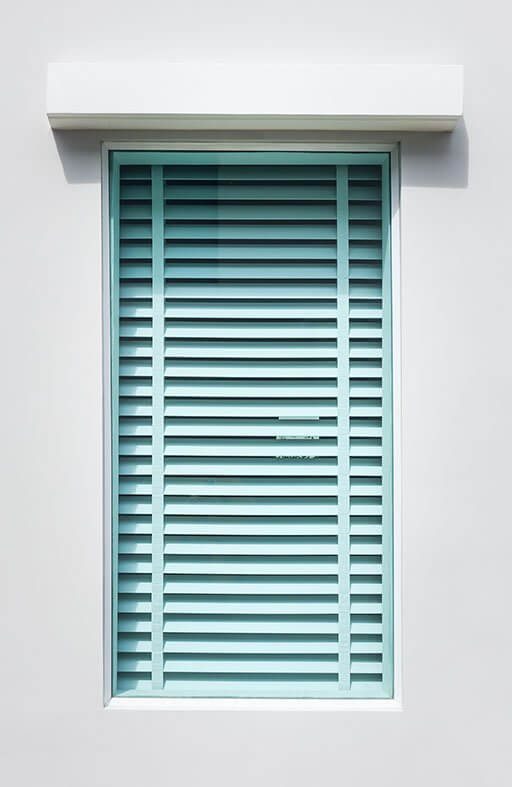If a bird has collided with your home, you are not alone as up to 1 billion birds die each year following window collisions in the United States. The good news is that you can install one of the effective solutions below to prevent future collisions.
These products are easy to install, but if you think you need help we recommended calling your local handyman, house painter, or window washer – every product below will be a quick job for them.
These inexpensive, easy-to-install products are proven to prevent bird strikes.

Acopian BirdSavers are long-lasting hanging cords that can be installed several ways

Feather Friendly are durable white or gray adhesive squares installed in strips. Feather Friendly offers both DIY and professional products.

ABC BirdTape is a durable translucent tape applied on the outside of the glass, available in stripes and squares.
While placing bird-friendly window products on the inside of windows may be tempting due to ease of application, homeowners should avoid this option whenever possible. Internally installed products are invisible to birds when window reflections are strong, rendering them ineffective. To learn more about internally applied solutions, see below.

Vertical monofilament installed by screwing mounts into the outside of the building.

Installing standard-sized, commercially available screens can also help protect birds.

Small, tightly-spaced translucent UV adhesive decals that work best on the outside of the window. Birds that don't see UV, like Mourning Doves, won't be protected but most songbirds should see this product. They offer both do-it-yourself and professional products.

Solyx offers six bird-friendly full-window films that might require professional installation.

Use brushes/stencil rollers and non-toxic tempera paint, longer-lasting acrylic paint, or an oil-based pen. For this to be an effective solution, be sure to follow the pattern instructions below under "Ensure That Your Window Solutions Are Effective"

Large translucent UV adhesive decals that work best on the outside of windows. Birds that don't see UV, like Mourning Doves, won't be protected but most songbirds should see this product. Decals should be closely spaced.

Translucent UV adhesive decals that work best on the outside of the window. Birds that don't see UV, like Mourning Doves, won't be protected but most songbirds should see this product. Decals should be closely spaced.

Decals on the outside of your windows that are at least one quarter-inch in diameter and spaced two to four inches apart should prevent most collisions. Many shapes and sizes available.

CollidEscape sells many products as bird-friendly. ABC recommends full-window white CollidEscape.
Explore additional window solutions for homeowners and architects in ABC's Products & Solutions Database.
For a bird-safe home, start by identifying problem windows. Not all windows pose equal dangers to birds. In fact, the majority of collisions are often caused by a small number of problem windows. Identifying and fixing the most dangerous locations is a good way to prevent future collisions. To get started, treat the following windows:
In many cases, fixing only these windows will stop almost all of your collisions. But remain vigilant: If collisions occur at other windows, you can apply similar solutions to continue making your home bird friendly.

Always apply your solution to the outside of the window. Solutions on the inside will be hidden by reflections on the outside of the window for most or all of the day.
While ABC recommends applying all bird-friendly products on the outside of your windows, you might have windows that are hard to reach from outside. In these cases, a quick test can tell you if a solution on the inside of the window might work.
Begin by applying the proposed “inside” solution to your window. Then observe the window from an outside location every two to three hours, starting in the early morning, to determine its visibility. If you can clearly see your test, birds might too. Your test solution should be something large and bright, like Post It Notes, so that it has a chance to be visible through the reflections on the outside of the glass.
Don't forget: You can call a handyman, window washer, or a house painter to help apply bird-friendly solution to inconvenient windows.
Research shows that most collisions can be prevented by applying patterns that are correctly sized and spaced on the outside of glass surfaces.
If your pattern consists of stripes, they should be at least one-eighth of an inch wide. If you use dots or similar shapes, they should be at least one-quarter of an inch in diameter. It is not necessary to use simple dots or stripes — any pattern that follows these rules will save birds.
In general, white patterns tend to perform best because they reflect most light and provide greater contrast against a range of background colors and reflections.
Ideal spacing follows the two-inch-by-two-inch rule: Patterns that have vertical, horizontal, or diagonal spaces of two inches or less – and that follow the pattern size rules above – will prevent most collisions.
Larger spacing poses a risk to small songbirds, including hummingbirds, that can easily fly through four-inch wide gaps.
Looking for an alternative? You can also apply a uniform solid pattern, including screens or solid-color window films, that cover the entire window.
New windows save energy, but are they dangerous for birds?
People often report large increases in collisions after replacing home windows. These are typically attributed to several causes, including:

Unfortunately, there aren't widely-available bird-friendly options for new or replacement home windows on the market. However, there are several things you can do to make sure your new windows (and glass doors) are safe for birds:
American Bird Conservancy is a world leader in the field of bird collisions. Founded in 2009, our Collisions Program is the only full-time, science-based initiative dedicated exclusively to preventing bird collisions. Our Collisions Team has tested hundreds of window products, pioneered a window rating system, and collaborated with leading glass companies to design bird-friendly products. In addition, our experts have consulted with government agencies to institute ground-breaking bird-friendly solutions and designed LEED-based education courses.